How Do You Install a Chimney Fan?
Draughts are typically viewed by homeowners in a negative light. However, there’s one area where a draught is essential; the fireplace! Today’s homes tend to be fairly draught-free, however. So, what do you do if you need to create a draught in your fireplace? Install a chimney fan, of course. Keep reading to find out more…
Why do fireplaces need a draught?
Chimneys operate on the principle of the ‘chimney effect’ (also known as the stack effect). The principle is based on the fact that hot air rises above cold air.
When your fire burns, it gives off heat. This heat warms the air in the chimney cavity, creating a pressure difference between the air in your room and the air in your chimney. This pressure difference causes the hot air in the chimney to rise up and exit out the top. At the same time, this causes your fire to ‘pull in’ cold air.
This process creates a draught - aka a continual movement of air - which sustains the fire as long as it is fuelled.
Without this draught, it can be almost impossible to light and sustain a fire in your fireplace.
However, many modern homes - especially those built in recent decades - are particularly airtight and don’t have much air permeability. This means it can be difficult to create the ‘chimney effect’ in your fireplace.
However, there is a solution; chimney fans.
In this article, we’ll explore:
> Different types of chimney fans.
> How to install a chimney fan.
> Flue fan maintenance.
> The main benefits of having a chimney extractor fan installed.
Are there different types of chimney fans?
There are a number of different types of chimney fans, depending on the application and requirements, which include:
> Chimney fans for solid fuels - some are designed for very high temperatures and others are designed for more basic use.
> Chimney fans for gas fireplaces and boilers - including a choice between wall-mounted chimney fans and top-mounted options.
> Chimney fans for oil, gas, biomass boilers, and buildings.
Guide - for more extensive guidance on how to find the right flue fan for you, check out our handy chimney fan buying guide.
How to install a chimney fan
When installed, a chimney fan sits at the very top of the chimney. It is designed to cover the opening of the chimney cavity, concealing the flue.
With some brick chimneys, the fan can be installed inside the cavity, so it isn’t visible from the outside. However, in this step-by-step guide, we’ll take you through the standard process for installing a chimney fan.
Caveat
Please note that these are just general instructions designed to point you in the right direction. It’s essential to consult the manual for your specific chimney fan model. Or, better yet, ask a professional to install it for you.
The flue fan installation process should take around 15–20 minutes, excluding any prep beforehand (i.e. sorting tools and climbing up onto the roof).
1. Prepare the chimney crown
Clean your chimney crown and remove any debris. If you have a clay chimney liner, now’s the time to trim it so that it goes no more than half an inch past the chimney crown.
2. Cut the fibre mat to size
Measure and trim your fibre mineral wool mat to the exact diameter of the chimney flue. Set aside until you reach step five.
3. Mount brackets to the base of the fan
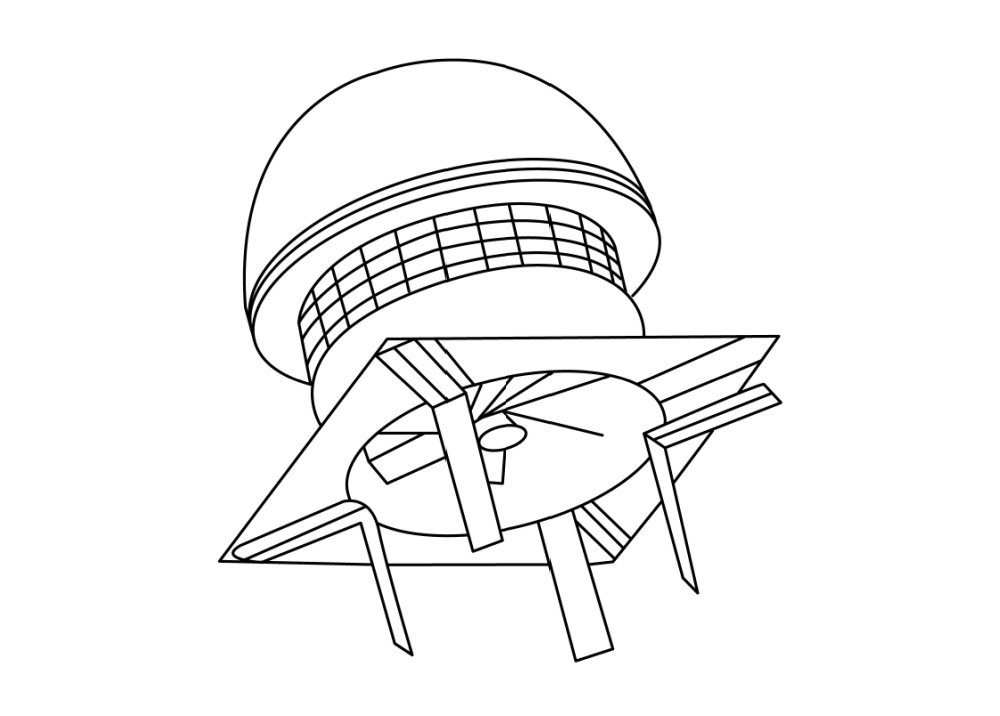
Attach the L brackets that come with the unit to the base of the fan according to the model manual.
The illustration above shows how and where these L brackets should be attached to the chimney fan.
4. Put the flange in place
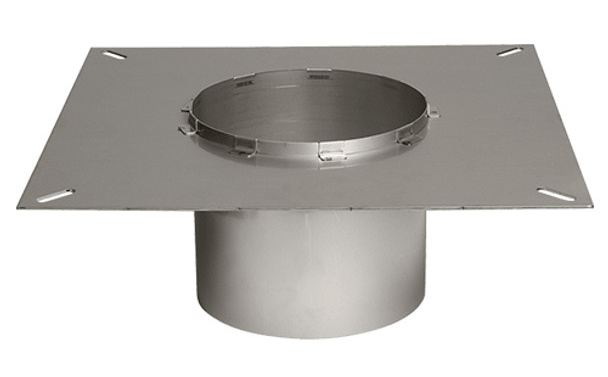
If you are installing the chimney fan on a metal chimney or twin wall flue, then you’ll need a flange. Slot your flange into the chimney cavity for added stability and vibration control. The image above shows you what a typical chimney fan flange looks like.
Here at Trade Price Flues, we make chimney fan flanges to order, with a minimum lead time of two weeks.
Note - not all chimney fan installations necessarily require the use of flange. This is often determined by the type of chimney and/or fan you have. If in doubt, contact us.
5. Put the fibre mat in place
Remember the fibre mat that you cut to size in step two? Well, now’s the time to place the fibre mat on top of the flange (or straight onto the chimney crown if you aren’t using a flange).
6. Place the fan on top of the fibre mat
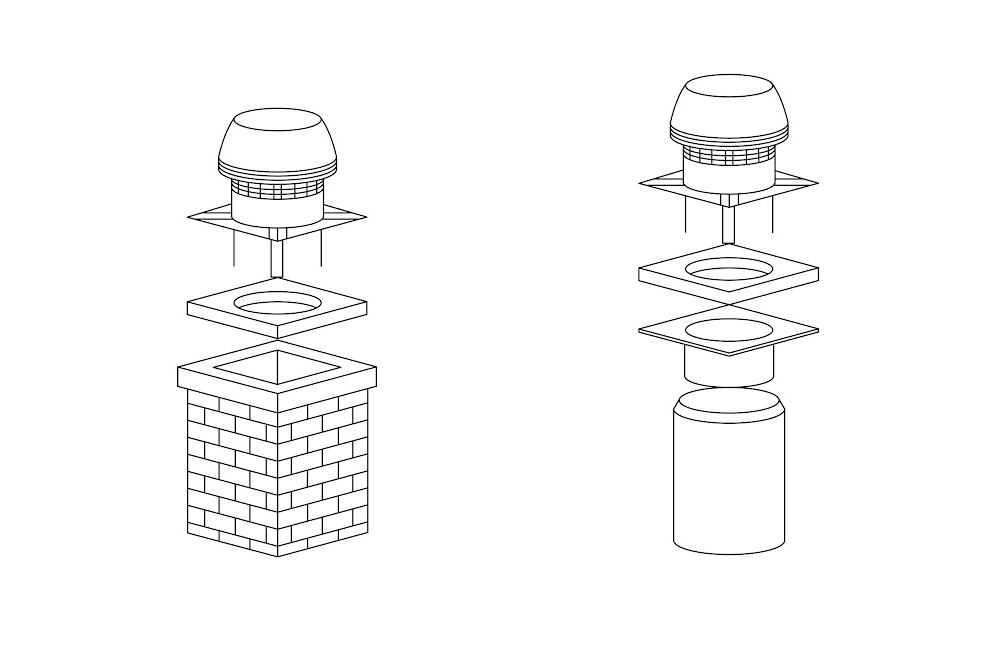
Place the fan on top of the fibre mat and flange (if you’re using one). The L brackets that you affixed to the fan earlier should slot neatly through the hole that you have cut into the fibre mat.
As the illustration above demonstrates, you will typically only require a flange if you’re installing a chimney fan on a metal chimney. This is because chimney fans require additional support and stability when used with many metal chimneys.
7. Bonus step: secure with silicone
By this point, the weight of the fan combined with the L brackets should ensure that your chimney fan is securely positioned. However, if you want to double down on stability, you can apply some silicone sealant between the fibre mat and the fan.
8. Secure the wires and cables in place
Now it’s time to mount the necessary wires to the chimney securely and run through the base of the fan. Carry out this step in accordance with the specific instructions in the model manual.
9. Situate the indoor control unit
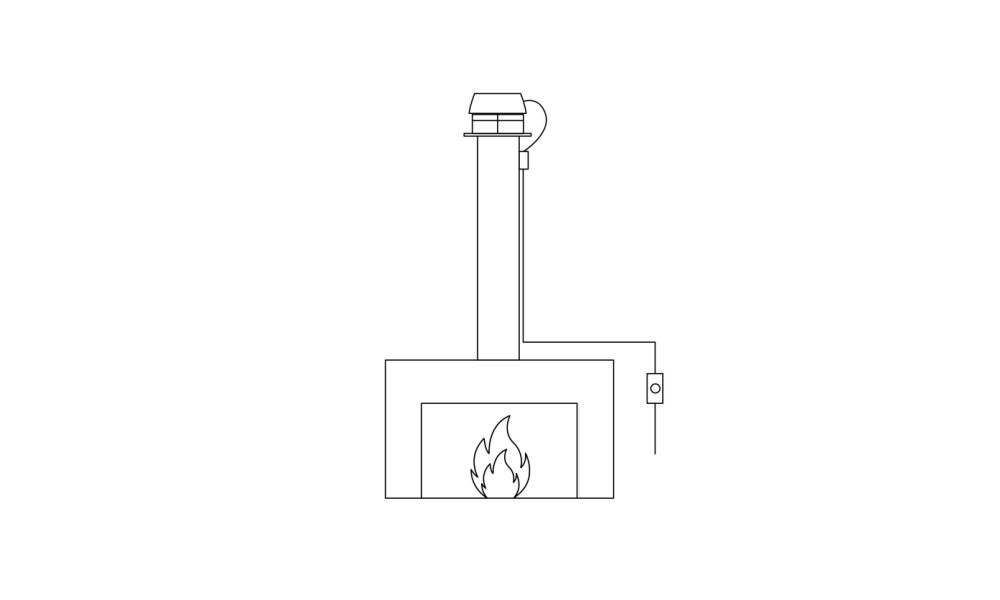
Decide where you want your indoor control unit to be so that an electrician can come along and connect everything.
Most people choose to have the control unit installed near their fireplace. From this unit, you will be able to turn the fan on and off from the comfort of indoors.
10. Get an electrician to hardwire the fan
A certified electrician now needs to wire the system into your mains electrical supply, so you can start using the fan.
Once that’s been done, your chimney fan will be ready to use!
Our top chimney fan installation tips
If you want to make the installation of your new chimney fan as simple and easy as possible, follow our top tips below:
> Get an expert to do it for you quickly and safely.
> If you want to DIY your fan installation, make sure to do it on a dry day, in light conditions, with no wind (however, you will still need a qualified electrician to complete the installation).
> Wear protective headwear, gloves, and eye protection.
> Don’t do it alone - have somebody on hand for support.
> Make sure your ladder is secure before using it.
> Ensure your roof tiles are secure before climbing on them.
Chimney fan maintenance
The great news is that chimney fans demand very little day-to-day maintenance.
Due to them being self-contained units, they shouldn’t even require much in the way of servicing. That said, it’s important to clean your chimney flue fan from time to time.
Our advice:
> Ask a chimney sweep to clean your chimney fan at the same time they are cleaning your chimney cavity. We recommend doing this at least once a year, but more often if you light fires on a regular basis.
> Turn your chimney fan on regularly, even if you aren’t using your fireplace or appliance. This will prevent the fan from seizing up or running into unnecessary operational issues.
What are the benefits of chimney fans?
Is it really worth investing in, and installing, a flue extractor fan on your chimney? We’ll let you make your mind up, but below you’ll find the top benefits associated with chimney fans.
Optimum draught
As we stated earlier, many fireplaces in newer homes are unable to generate a sufficient draught to light and maintain a fire. This is because of the low air permeability of new homes.
It’s the primary job of chimney extractor fans to provide sufficient draught and air circulation. The fan will create a negative pressure inside the chimney flue, which means your fire has to pull in oxygen from the room it’s located in.
This negative pressure boosts performance and leads to more controlled and efficient use of the fireplace or appliance.
With a chimney fan, draughts are optimised no matter what the weather is like outside. It’s for this reason that a chimney fan is one of the best ways of combating chimney downdraft.
Heat efficiency
Combustion needs an adequate air supply in order to occur, which is why insufficient draught is so detrimental to the use of fireplaces or appliances.
With sufficient draught, it becomes significantly easier and quicker to start and control a fire.
Not only does this improve heat efficiency, but it also results in reduced waste of fuel such as gas, solid fuels, and wood.
Easier fire lighting
By creating a consistent, reliable draught, a chimney fan will make it far easier to light and get your fire going.
This not only saves you time and hassle, but will reduce the amount of kindling and firewood that goes to waste during the lighting process.
Smoke control
Chimney fans work to draw smoke and other fumes upwards, so they travel up the flue and out of the building, rather than leaking into the indoor environment.
This has the obvious benefit of keeping your living room or kitchen free from soot, ash and other combustible elements.
Discreet installation
Chimney fans are mounted at the very top of a chimney (or to a twin wall flue system), which means installation is discreet. In fact, from outdoors, they are practically invisible. This means that a chimney fan can boost the performance of your fireplace, without detracting from the visual appeal of your home.
Chimney fans are also a great way of preventing unwanted things such as dead leaves, twigs, birds or small animals from getting into your chimney.
Odour control
The function of a chimney fan is very similar to that of a kitchen extractor fan.
It helps to draw air, fumes, and gases out of the chimney, so they don’t end up leaking into the building and causing unpleasant odours that get trapped indoors.
These odours can get absorbed into furniture and fabrics, making them more difficult to remove. A flue fan redirects the stale air back out of the chimney to keep your environment smelling clean and fresh.
Chimney fans for sale
If, having read this article, you’ve decided it's time to boost the performance of your chimney, then you’ll find an excellent selection of flue fans below.
Chimney fans for solid fuels
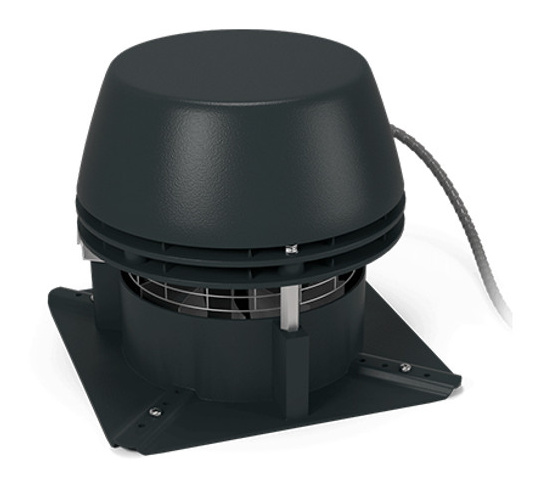
Shop Now - Solid Fuel Chimney Fans
Are you going to be burning solid fuels in your fireplace, such as anthracite or hardwoods? If the answer is yes, then you’ll need a chimney fan that’s specifically designed to work with these fuels.
Here at Trade Price Flues, we stock a variety of solid fuel chimney fans, including models which discharge smoke and combustibles on a horizontal or vertical basis. You’ll also find flue fans with different bases in our range.
Chimney fans for gas fireplaces and boilers
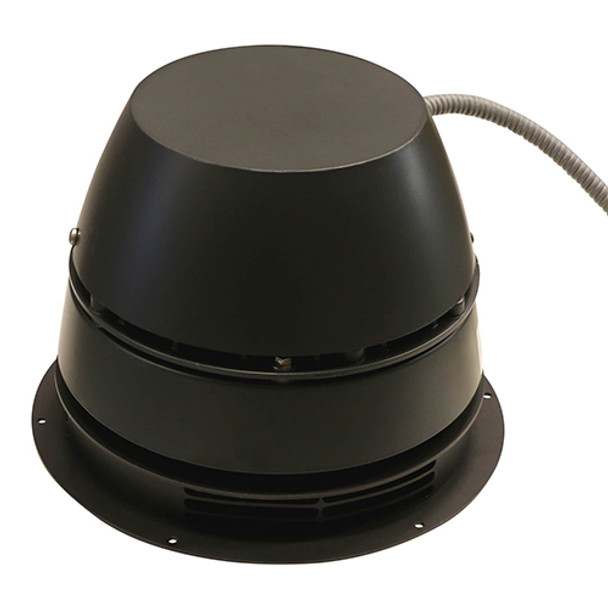
Shop Now - Chimney Fans for Gas Fires & Boilers
As we mentioned at the outset of this article, there are different types of flue extractor fans for different types of fires and appliances.
As such, if you have a gas fire or boiler where you want to improve the draught, you’ll need a chimney fan that’s explicitly been designed to work with that form of fire/boiler.
At Trade Price Flues, you’ll find a range of chimney flue fans suitable for use with gas fires and boilers. The various models include ones with horizontal or vertical discharge, and fans which can be wall mounted.
Chimney fans for oil appliances and biomass boilers
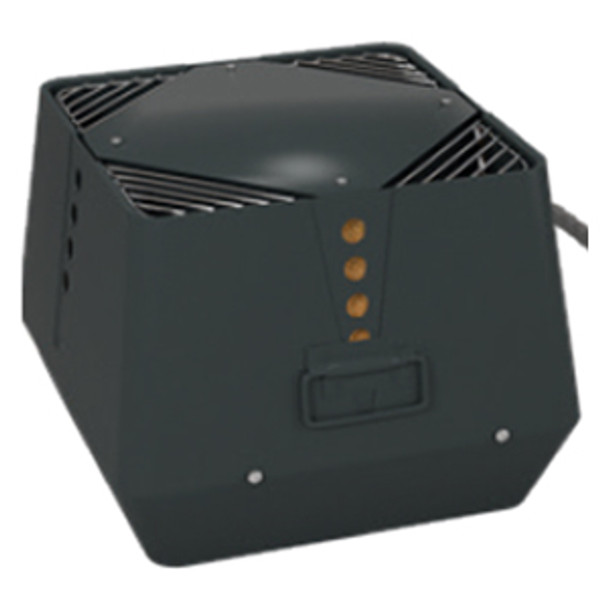
Shop Now - Chimney Fans for Oil Appliances & Biomass Boilers
Finally, if you have either an oil appliance or biomass boiler in your home or property, then you’ll want one of our fans which has been expressly designed for these applications.
Our range of oil and biomass chimney fans includes both horizontal and vertical discharge models.
Fan your fire with Trade Price Flues
If you want to improve the performance and efficiency of your fireplace, it’s time to install a chimney fan.
We hope this article has shown you how simple this can be when you enlist the services of an experienced and qualified professional.
If you’d like to ask us a question or speak to one of our team of experts, call us on 0161 6975 491 or submit your query using this form.
Shop a wide selection of chimney fans at Trade Price Flues today
Find more expert chimney and flue advice on the Trade Price Flues blog…
Why You Should Insulate Your Chimney Flue | How to Stop Rain From Coming Down Your Chimney | Do I Need a Flue Liner for an Open Fireplace?
Latest Articles
-
Air Pollution Down in the UK Despite Record Wood Burner Sales
Great news! Wood-burning stoves, once considered environmental villains, have transformed into eco-f …18th Apr 2024 -
A Guide to Stove Installation in Lodges, Sheds, and Shepherd’s Huts
Shepherd’s huts, lodges, and sheds have become increasingly popular as charming retreats or alternat …25th Mar 2024 -
Pinned vs. Pinless Moisture Meters: Which is Best for Firewood?
When you collect or buy firewood, it usually starts very moist inside. Using sopping wet wood to bur …4th Mar 2024






